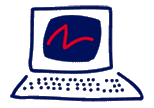
About Us
Prototypes
Confidentiality
Get Started
Contact Us
History [ edit ]
Poker has been appearing on television somewhat regularly since the late-1970s. In the United States, CBS started 🌧️ airing the final table of the World Series of Poker (WSOP) Main Event as an annual one-hour show around this 🌧️ time and later by ESPN, which were casino-produced shows produced under a time-buy arrangement for sports omnibus programming such as 🌧️ the CBS Sports Spectacular. For many years, the coverage was less than robust because viewers at home could not see 🌧️ what cards the players had or follow their progress visually through graphics. Instead, the coverage essentially involved the commentators guessing 🌧️ what cards the players had in a documentary style production.
In 1997, the hole cam, which allows audiences to see the 🌧️ hidden cards that players held in their hands, was introduced in Europe. The hole cam was patented by WSOP bracelet 🌧️ winner Henry Orenstein and first used in the Late Night Poker television series. It was used again in the inaugural 🌧️ Poker Million tournament in 2000 which boasted the attraction of the first £1,000,000 poker game on live television. By 1996, 🌧️ however, the ESPN one-hour highlight show only included hands that were shown down, so that the commentators, including Gabe Kaplan, 🌧️ could comment, in post-production, on the hands while they were being played out. The commentators referred to this as "taking 🌧️ a peek at the cards", and provided the first contemporary announcing on hands during the play in poker history. By 🌧️ 2001, however, Late Night Poker had been cancelled in the UK and televised poker could no longer be found in 🌧️ Europe. In the US, the 1999, 2000, and 2001 World Series of Poker events were only broadcast in one-hour documentaries 🌧️ on the Discovery Networks.
In 1999, documentary filmmaker Steven Lipscomb produced and directed a documentary on the WSOP for the Discovery 🌧️ Channel. It was the first U.S. poker production funded entirely by a television network rather than the casino. When the 🌧️ 1999 WSOP aired, it doubled its audience over the hour time slot. Seeing the audience reaction, Lipscomb believed there was 🌧️ an untapped market and began pitching poker series ideas to cable and network television. Because poker had been on the 🌧️ air for over twenty years, with little viewer interest, broadcasters were unwilling to commit resources to put a series on 🌧️ the air.
In October 2001, Lipscomb wrote a business plan. Along with poker player Mike Sexton and poker business woman Linda 🌧️ Johnson, Lipscomb approached casino mogul and avid poker player, Lyle Berman, whose company Lakes Entertainment agreed to fund the World 🌧️ Poker Tour (WPT)—the first organized and televised tour of poker tournaments in the world.